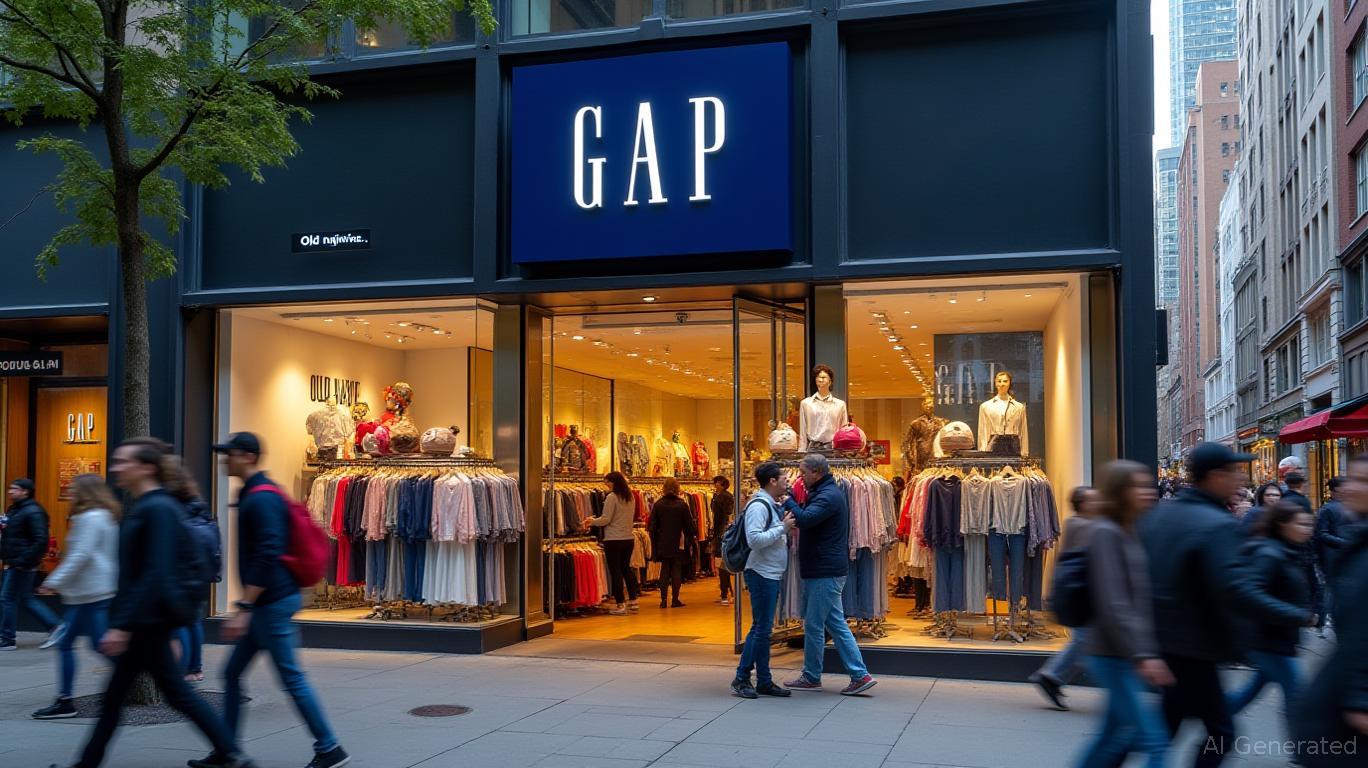Gap Inc.: Navigating Tariff Storms to Unlock Value by 2026
The apparel industry is no stranger to volatility, but few companies have faced such a stark juxtaposition of short-term pain and long-term promise as
Inc. (GPS). With tariff-driven costs potentially exceeding $250 million in 2025—yet mitigated to just $100 million through strategic pivots—the company stands at a critical inflection point. For investors willing to look beyond the noise of trade policy uncertainty, the pieces are aligning for a compelling turnaround story. Let's dissect why the market may have overreacted to near-term risks, creating a rare buying opportunity.
The Tariff Impact: A Storm, Not a Tsunami
The headlines are grim: tariffs could add $250 million–$300 million to Gap's 2025 costs. But this figure ignores the company's aggressive mitigation efforts. By slashing Chinese sourcing to under 3%—from nearly 10% in 2024—and diversifying production to Vietnam, Indonesia, and India, Gap has already neutralized over half the threat. The reveals a deliberate shift away from overreliance on any single nation, with no single country exceeding 25% of sourcing by 2026.
Even with new tariffs on Vietnam (46%) and Indonesia (32%), the company's cost-sharing agreements with suppliers, AI-driven logistics optimization, and $150 million in annualized cost savings (by 2026) create a buffer. Crucially, management has excluded tariffs from its 2025 financial targets—operating income is still projected to rise 8%–10%—a sign of confidence that these are controllable, not existential, issues.
Valuation: A Discounted Bargain, Not a Write-Off
Gap's stock has plummeted 20% year-to-date, pushing its P/E ratio to 11.69, a 24% discount to its five-year average and sharply below peers like Abercrombie & Fitch (P/E 18.3) and Ralph Lauren (P/E 15.8). This underscores the market's pessimism. Yet the fundamentals tell a different story:
- Strong liquidity: $2.2 billion in cash (up 28% YoY), enabling reinvestment in brands and share buybacks.
- Brand momentum: Old Navy's 3% sales growth and Gap's 5% rise in Q1 2025 highlight operational discipline.
- Sustainable tailwinds: 57% of cotton now sourced from sustainable programs, with plans to hit 100% by 2025—a move that aligns with rising consumer demand for ethical apparel and reduces dependency on volatile international supply chains.
The dividend yield of 1.8% and a 38% year-over-year cash reserve boost further signal financial health. At current prices, the stock trades at just 1.1x tangible book value, a historic low that suggests the market has priced in worst-case scenarios.
The Execution Crucible: Risks vs. Rewards
No investment is risk-free. Gap's near-term hurdles include:
1. Tariff timing: The bulk of tariff impacts are weighted to H2 2025, which could pressure margins.
2. Brand execution: Athleta's 6% sales decline and Banana Republic's stagnation demand urgent fixes.
3. Trade policy volatility: Fluctuating court rulings on Trump-era tariffs add uncertainty.
Yet these risks are manageable. CEO Richard Dickson's turnaround plan—focusing on cost discipline, e-commerce growth (now 39% of sales), and brand reinvestment—has already delivered results. Gross margins expanded to 41.8% in Q1 2025, and the company's 2026 near-shoring target of doubling U.S. cotton usage creates a shield against future tariffs.
The Case for Buying Now, Holding Through 2026
The key question: Is the tariff overhang overdone? We think so.
- Near-term upside: The stock's 30% rebound after Q1 earnings shows investor sentiment can swing swiftly on positive data.
- Long-term catalysts: A 2026 outlook with reduced tariff exposure, a revitalized Athleta brand (targeting 50% growth by 2026), and Old Navy's dominance in value apparel could unlock valuation multiples.
- Cyclical tailwinds: As inflation eases, Gap's affordability and brand equity become stronger draws.
The could mirror its 2010–2013 turnaround, when disciplined cost-cutting and brand repositioning fueled a 150% share price rally.
Conclusion: A Discounted Champion Awaits
Gap Inc. is not a perfect investment. But at a P/E of 11.69, with a fortress balance sheet and a management team executing a clear turnaround plan, the risks are priced in. The company's ability to mitigate $200 million in tariffs through diversification and operational excellence signals that the worst is likely behind it. For investors with a 12–18 month horizon, this is a rare opportunity to buy a once-iconic brand at a deep discount—before the market recognizes the storm has passed.
Action to take: Accumulate shares of GPS now, with a target price of $20 by mid-2026 (implying a 40% upside from current levels). The next catalyst—Q2 earnings—could be the spark to reignite this undervalued story.
Disclosure: This analysis is for informational purposes only and not a recommendation to buy or sell securities. Individual circumstances may differ.

Comments
No comments yet